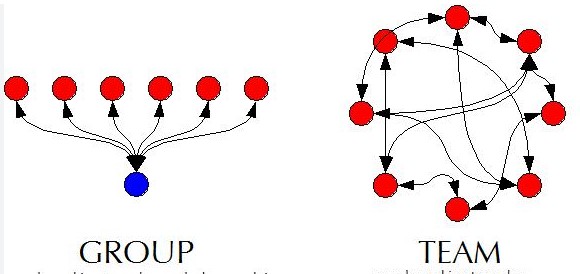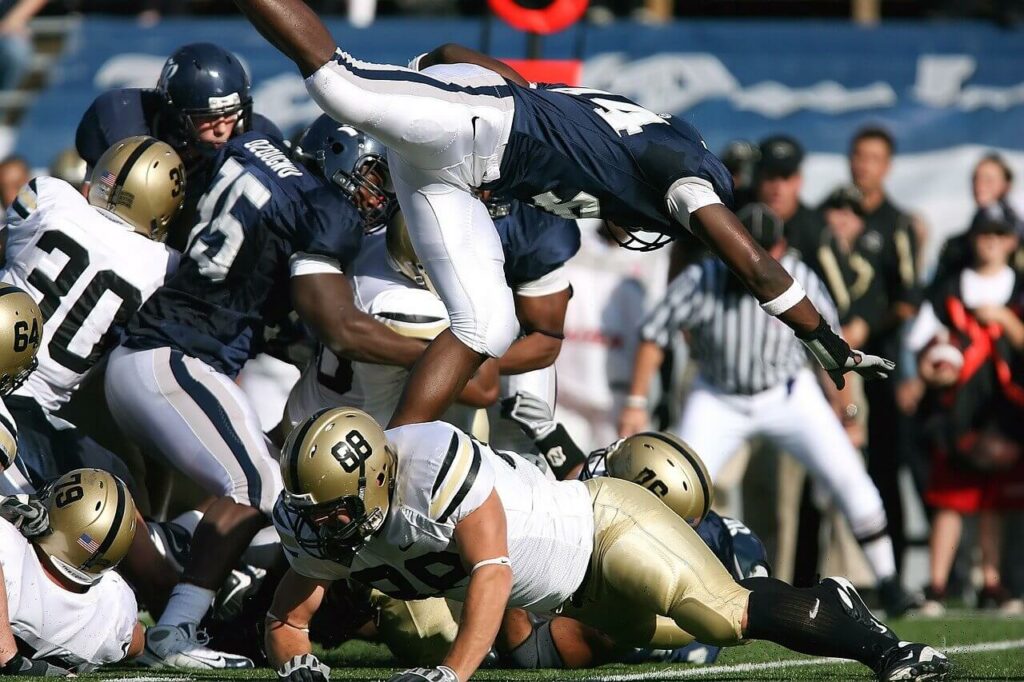STUDENT TREE

Forming Player Leadership Groups
Introduction
One of the main components of both leadership and teambuilding is our STUDENT TREE PROGRAM. All coaches must consider leadership to be an important part of athletic success, but the majority fails in developing good leaders. The most common mistake is assuming that a young man magically becomes a leader the moment they become a senior.
Other mistakes that coaches make are; failing to consider psychological characteristics, and instead choosing based on the “4 P’s” – position/popularity/performance/personality.
Another tragic mistake is arbitrarily choosing a set number of athletes as team leaders, which runs the risk of overlooking someone who is considered leaders by their teammates.
Know that; I do not assume that a teenager automatically knows how to lead based on grade, position, or popularity. We invest a year-round effort into teaching and cultivating leadership.
This is all outlined in my blog on “Teaching Leadership” and also in my book: LEADERSHIP and TEAMBUILDING in HIGH SCHOOL ATHLETICS. Let us look into those steps and attributes in selecting group leaders.
Selection of Group Leaders
When we go back to school after winter break, I met with a very large group of players in my room on a Monday night. This group comprises of anyone the coaching staff believes can be a good leader. However, there are some wrong criterions for who gets invited such as input from rest of the team, good GPA, and no discipline issues from past season.
The Draft
I ordered pizzas for all the players whom we invited and ask that all the coaches are in attendance. I talked to them before the draft about why we are doing this and some things to consider when drafting. I also emphasized that this early season appointment to be in charge of a group does not mean they will be a captain nor does it give them permission to bully or boss others in their respective groups. I have removed several leaders from their groups over the years.
What we do is divide our team up into groups of 4-6 players and assign two leaders to each group. The ideal group would have two leaders and four players under them. These groups include potential players who have expressed an interest in coming out or players that have been identified to be “recruited” or talked into playing. So a roster of 40 would have five groups of six and two groups of five.
There is also an assistant coach in charge of each group and how large your coaching staff might determine your group size. I put up a roster of all the players whom I think will play on the board and we started “drafting.” The pair of leaders who get to choose first is the last to pick in the second round. The pair who chooses last in the first round gets to choose first in the second round.
Some leaders make the mistake of choosing friends. I explained to them before the draft to consider the following:
- They need to choose players they see every day since they will collect grade checks & pass along messages from coaches
- If someone from their group is absent, everyone in the group is penalized with extra conditioning.
- All fundraising competitions will be done in these groups
- Players in the same group will sleep together during offseason camps & retreats.
Role of Coaches
I have had assistant coaches want to form groups according to position groups. This is a mistake. One of the primary purposes of this program is to build team camaraderie and force players to interact. For example, seniors’ interaction during the day with sophomores that have been pulled up; linemen mixed with backs, offense mixed with defense.
Another side benefit is that it makes my job as a head coach easier. Instead of collecting 40-grade checks, I just have seven leaders collect them and turn them to me. Instead of texting 40 players, I only text seven leaders. When I need to pass out or collect fundraising forms, I give them to my leaders and let them find everyone.
Another problem in relationship building that we have in California is that our large numbers of walk-on coaches do not see our players during the offseason. So our assistant coaches are required to meet with their groups twice per month and to send inspirational text messages to the entire team every week.
Team Building
It is discovered that today’s youth are dependent on technology for communication. Face-to-face conversations, phone calls, and even emails are uncomfortable and replaced by texts and IMs (Instant Messages). They spend more time indoors using technology and friendships are often virtual. They feel safer sharing on social media sites and desperately want to be part of larger groups. However, the desire for group harmony but the lack of communication and social skills to drive or maintain it are lacking in these methods.
The STUDENT TREE PROGRAM forces our players to interact and has actual face-to-face conversations since grade checks and forms cannot be disseminated via a text message. It also promotes interaction between the different social circles that our players hang out with during the day on campus.
When a member of a group misses a workout or violates a team policy, everyone in the group is penalized. This sends a loud message that OTHER PEOPLE DEPEND ON YOU and makes players realize that they are part of something bigger than themselves.
Roles Clarity and Acceptance: All team members must understand that they have a role on the team. Team members need to see how their actions genuinely affect the team’s objectives.
Leadership Development
Moreover, teams will lack motivation and cohesion if peer leaders do not emerge. We spend a lot of time teaching leadership but also need to provide opportunities to put it them practice. We want to empower future leaders by encouraging independent action and self-development. Our group leaders are not merely “paper pushers” and message deliverers. If someone in their group has bad attendance or dropping grades, we ask our leaders to talk to the struggling player and offer solutions. This teaches our young leaders to have a culture of citizenship and be “mentor leaders.” To successfully climb Jon Maxwell’s leadership ladder, a person must help others to get followers.
The student tree CENTRALIZES leadership and more importantly increases interactions amongst teammates which in turn will promote relationships, connectivity, and cohesiveness. The student tree spreads the wealth of leadership by enabling MULTIPLE team members to step up and lead. This creates opportunities for the emergence of leadership.
It develops individual responsibility and accountability, and also stimulates team unity and cohesion.
One of the first obstacles to becoming a leader is the understanding that ordinary people can lead. Young people do not see themselves in a leadership position for the following reasons:
- Since they have had adult authority figures all their lives, leadership is a new concept.
- Children learn at an early age not to be a bully or bossy. They overcompensate by avoiding any role that is acting superior to others.
- Leadership is only for the chosen few and requires a title.
- Being a leader takes too much time & work. Coaches need to show them that good leadership lightens the load. Start by showing them how to lead themselves such as follow thru on promises and treating others with dignity and respect.
Conclusion
Whether it is on the field or in the locker room, effective coaches need to understand the strategies to turn a group of individuals into a cohesive and successful team. Successful teams have distinct characteristics such as shared leadership, fluid responsibility, accountability to the group, and shared goals.
Click here to see my entire WORST TO FIRST BLUEPRINT on BUILDING A CHAMPIONSHIP PROGRAM




Love coaching athletes